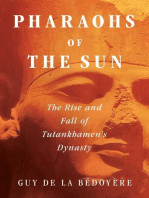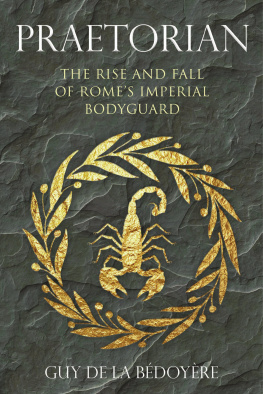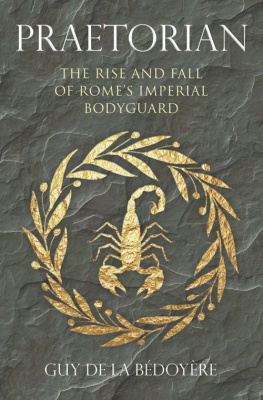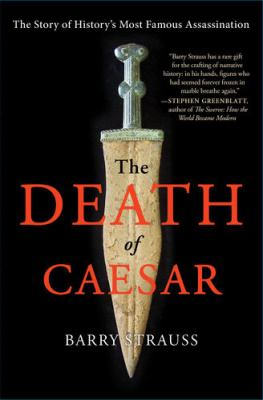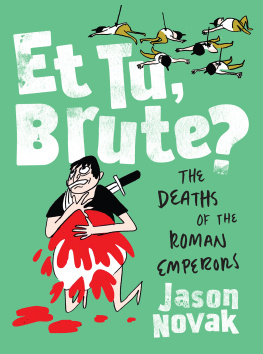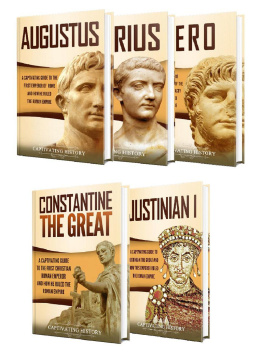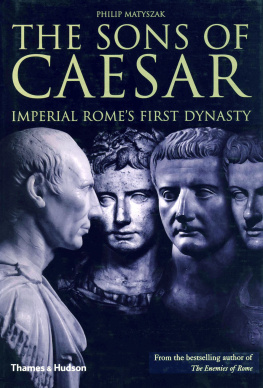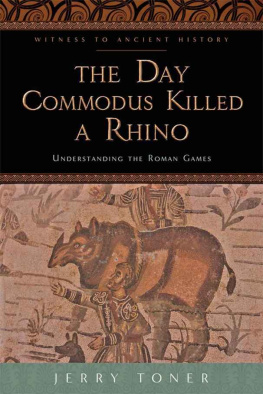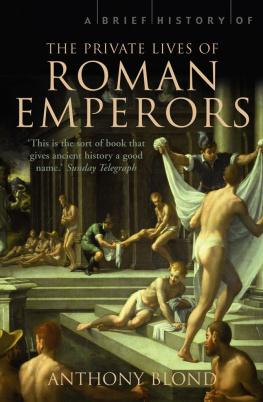DOMINA

Copyright 2018 Guy de la Bdoyre
All rights reserved. This book may not be reproduced in whole or in part, in any form (beyond that copying permitted by Sections 107 and 108 of the U.S. Copyright Law and except by reviewers for the public press) without written permission from the publishers.
For information about this and other Yale University Press publications, please contact:
U.S. Office:
Europe Office:
Set in Adobe Garamond Pro by IDSUK (DataConnection) Ltd
Printed in Great Britain by TJ International Ltd, Padstow, Cornwall
Library of Congress Control Number: 2018946848
ISBN 978-0-300-23030-7 (hbk)
A catalogue record for this book is available from the British Library.
10 9 8 7 6 5 4 3 2 1
Dedicated to the imperial women of my own family: Rosemary,
Sarah, Rochelle, ine, Daniela, Nell and Willow-Rose, and my
former students who inspired this book
CONTENTS
PLATES AND MAPS
Plates
All photographs are by the author unless otherwise stated.
Maps
FOREWORD
T he Roman world, whether writing or reading about it, watching epic movies, wandering amongst its prodigious weed-strewn ruined monuments or padding softly past museum cases packed with curious and remarkable artefacts, is something of a modern obsession. Indeed, it has been since the days of the Renaissance and the Enlightenment. However remarkable the physical remains, above all else it is the sheer force of the personalities that makes the Roman era so compelling. Recorded for us by Roman historians like Suetonius, Tacitus and Cassius Dio, individuals such as Augustus, Livia, Caligula, Messalina, Agrippina and Nero have long escaped the confines of those ancient chronicles. They remain well known today, serving as enduring symbols of power, opportunism, greed and folly. It is impossible to walk through the forums at Rome, or to read about their world, and not try to imagine what these remarkable people were really like.
With so many books written about the Roman world, what more could there possibly be to say? The women of the Julio-Claudian dynasty, the longest-lasting in Roman history, have proved popular topics in the past and present, either in the form of individual biographies or books that feature a series of shorter lives.normally been noted that the second longest-lasting dynasty in Roman history, that of the Severans, was also largely dependent on the female bloodline for its existence. All these women emerge as agents in an ongoing process of change, both in the conflicting roles of mothers and as political players, through their fundamental roles as the backbone of the dynasty and symbols of Roman society. Inevitably their importance to their dynasties meant that they ended up in positions of exceptional significance. Their narrative is therefore synony-mous with the history of the period. This does not mean that the men are prevented from intruding; their presence on centre stage is remorseless and inevitable, but they deserve to be pushed into the background a little more than is customary.
The inspiration for this book is the large silver coin, known as a cistophoric tetradrachm, of Claudius and his niece-wife empress Agrippina the Younger struck at Ephesus in around the year AD 51 (). The coin shows the emperor and empress as jugate busts, alongside one another and slightly offset. The significance and symbolism are remarkable. In a world where women could not hold any legitimate political power, here is a coin that appears to show joint rulers, an Augustus and an Augusta. That a Roman empress had reached such a remarkable level of prominence was and remains truly startling. It was a mark of Agrippinas exceptional level of political guile and manipulative skills that she had achieved this. The coin was an unprecedented design and remained unmatched and unrepeated in the Roman period. Even more astonishingly, Agrippina managed to carry her status through Claudius death in 54 and well into the reign of her son Nero. Her reign, and there is no better word for it, was the climax of female political power in the Roman world. Nobody else until Julia Maesa of the Severan era would come close to Agrippina. Understanding how Agrippina and others managed to achieve their grasp on power, and the price they paid for that, is at the heart of this books purpose.
Many very interesting modern books have been written on women in the Roman world and it is important to pay them due credit. Richard Baumans Women and Politics in Ancient Rome (1992) is an excellent survey of women in the days of the Republic and right through the Julio-Claudian period to the death of Nero. J.P.V.D. Balsdons Roman Women (1962) is a classic work that covers women from the origins of Rome right through to the fourth century. Balsdons book is especially recommended to readers looking for more But it is the ancient historians who are by far and away the most important resources used for this book. For all their faults they take us closer to the time than any modern authority possibly can. It is their sometimes outrageous prejudice that tells us most about the framework in which the women of the Julio-Claudians operated.
Anyone, however familiar with the Roman period, can find the vast range of names overwhelming. This can also cause problems for the most practised specialist. This derives from the Roman habit of eldest sons carrying usually the same name as their fathers, including in adoptive relationships. Daughters also acquired their names from their fathers, Agrippas daughter Agrippina the Elder being a particularly obvious example. While it was normal for brothers to have a different praenomen (first name), it was common (but not obligatory) for sisters to have the same name. This way Octavias daughters by Gaius Claudius Marcellus were both called Claudia Marcella and her daughters by Antony were both named Antonia. In this book a bewildering number of women called Julia appear. The normal custom in modern works with sisters is Wherever possible a persons identity has been specified as clearly as possible. The policy with male names is to use the name by which they are best known today. Octavian, for example, was more accurately Octavius before he became Augustus. However, he is usually now referred to as Octavian and that is how he appears in this book.
Analogies and comparisons from other eras are occasionally considered, though this is resisted by some scholars and not by others. Their treatment has conspicuous similarities to how women like Julia the Elder and Agrippina the Younger were depicted by Roman historians. This is a significant point. The explanations must include the manner in which medieval male historians were also inclined to portray powerful women who challenged the vested interests of their era, and the stylistic and rhetorical conventions established by Tacitus, Suetonius, Dio and others, which seem to have inspired them.
Readers can obviously use this book in any way they wish. As explained, the book is written largely as a narrative history of the Julio-Claudian period through the lives of the empresses and other imperial women. The Introduction and and refer back to the earlier sections as needed.
The experience of writing this book has been both memorable and sobering. Power in the Roman world was determined, controlled and defined by men. Women were supposed to be respectful, compliant and honourable, Impossible and often contradictory expectations, exclusion from opportunity and denial of rights that would never be imposed on men contrive still to make womens lives challenging and frustrating in ways many men cannot or do not want to understand fully or sometimes even acknowledge. Nonetheless, routes to power and influence that men had no access to were open to some women, precisely because women were outside male power structures. Recognizing that too is an essential part of understanding how Livia, Agrippina the Younger and Julia Maesa in particular achieved what they did.
Next page

